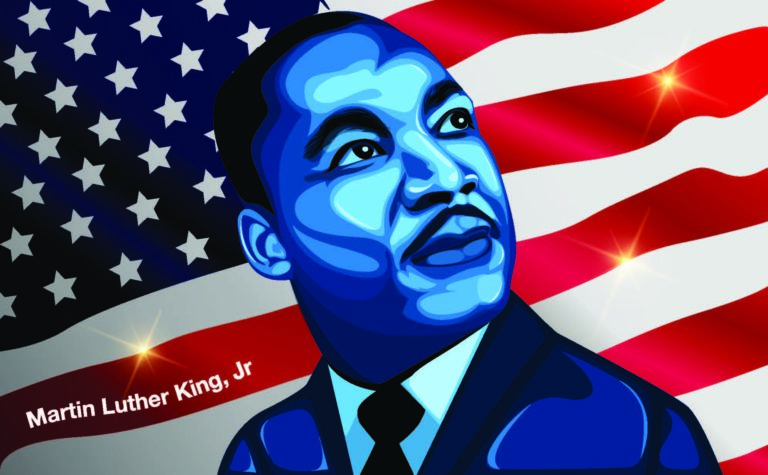As our country gears up to celebrate Dr. Martin Luther King Jr.’s legacy, his teachings remain significant today. While many differences separate today’s protest movements from those of the 1960s, there’s no denying the magnitude of change they both imposed. Dr. Martin Luther King Jr.’s beliefs lend themselves to some great classroom activities that can help today’s students better understand our country’s history.
The Importance of Dr. Martin Luther King Jr.
Martin Luther King Jr. was an activist who played a key role in the American Civil Rights Movement that took place in the mid 1950s until his assassination in 1968. Dr. King fought tirelessly for equality and human rights for African-Americans. According to History.com, Dr. King was the driving force behind the Montgomery Bus Boycott (Rosa Parks) and the March on Washington, which helped bring both the Civil Rights and Voting Rights Act to legislation. His epic “I Have a Dream” speech cemented his reputation as one of the greatest leaders in the fight for human rights.
Activities for Celebrating Dr. Martin Luther King Jr.
Commemorating Dr. King’s life on the third Monday of every January is a great stepping-off point to learning more about his tremendous influence. Here are some different classroom activities designed to get your students thinking about Dr. King’s poignant life and beliefs.
Breaking Down the Walls of Intolerance
“We will remember not the words of our enemies, but the silence of our friends.” – Martin Luther King Jr.
The mission of Teaching Tolerance is to help teachers educate youth to be active participants in a diverse democracy. One way of doing so is to help break down the walls of intolerance by having students participate in a united activity. Teachers will prepare red paper “bricks” ahead of time and give each student one. Then, they will ask students to recall a time they felt bullied, teased, or left out and write it down with a marker on the red brick. Younger students can draw a picture or dictate what should be written down.
Next, each classroom teacher will hang students’ bricks to create a wall of intolerance in the school’s hallway. Once all bricks are hung, ask students to copy one down on a piece of paper and share them in the classroom. Then, discuss ways students can eliminate that specific problem from their school culture.
Inspirational Artwork
“Whatever affects one directly affects all indirectly.” – Martin Luther King Jr.
Dr. King was a human rights activist that believed everyone should be treated the same and have the same opportunities. Public artwork can be informative as well as inspiring. For this activity, students will create a poster that will help to spark dialogue around an important issue (acceptance, equality, diversity, etc.). Students will work in small groups to plan and execute their design. Make sure students are able to answer the questions: “What is the central theme of your poster? What message does it express to your audience?” Once completed, students can unveil their artwork and share it with their classmates and then with their school community (hang it up in the hallway).
Contributing Peace
“He who accepts evil without protesting against it is really cooperating with it.” – Martin Luther King Jr.
Dr. Martin Luther King Jr. always encouraged peace and for that was awarded the Nobel Peace Prize in 1964. To help incorporate the spirit of Dr. King, have students think of how they can contribute peace to the world. Give each student a large, blank, white piece of paper and have students draw a peace sign on it. Next, have them draw a picture of themselves on the bottom left-hand section. The top two sections will be where they will write how they can contribute peace to the world. Younger students can draw pictures while older students can write anything they want in the top two sections of the peace sign. Display these peaceful projects in the hallway for a reminder of Dr. King’s dream.
An extension of this activity is for students to choose one of the ways they brainstormed they would contribute peace to the world; then hold a peaceful school protest. Discuss how Dr. King’s protests are tied to the protests happening today (take a knee, women’s march, etc.).
Mix it Up
“Courage is the power of the mind to overcome fear.” – Martin Luther King Jr.
Students report that the lunchroom is full of cliquey, segregated students who usually only sit with people they know. In response to this report, Teaching Tolerance created an event called “Mix it Up at Lunch,” which is a call to action for students in all grades to sit next to someone new in the cafeteria. This event helps students cross social boundaries, meet new people, as well as learn some social skills. MLK day is a great opportunity to host a “Mix it Up” day to help break down social barriers and encourage students to be courageous, overcome fear, and try something new.
Serving Others
“Life’s most persistent and urgent question is, What are you doing for others?” – Dr. Martin Luther King Jr.
Celebrate Dr. King Day in your classroom with a day of service. Students can develop their own service project or can be given a choice of options. Americorps can help you plan your volunteer project with a list of project ideas such as providing food assistance, promoting healthy futures, and helping to beautify the community. Students of all ages can help.
Dr. Martin Luther King Jr.’s teachings are more relevant today than they ever have been. Through meaningful classroom activities, students can gain a deeper understanding of why our country honors his legacy and why his teachings are still important today.
Looking for other ways to recognize MLK Jr. in your class? Explore our lesson plans and writing prompts!




